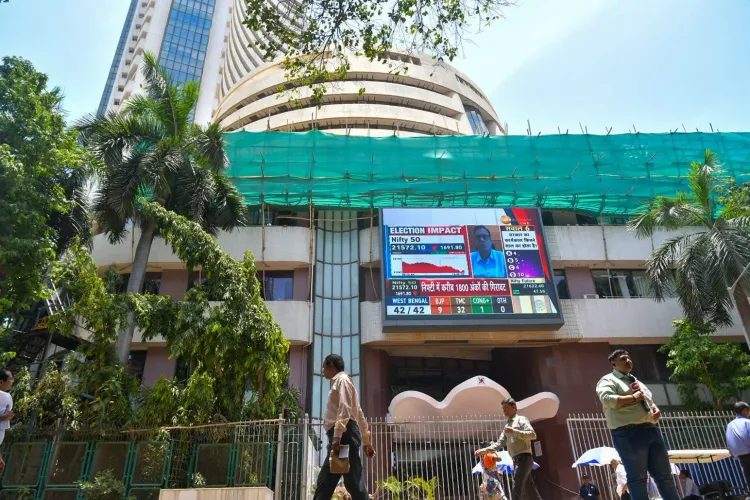What Caused the Indian Markets to Dip 0.9% This Week?

Synopsis
Key Takeaways
- Sensex declined 0.9% this week.
- Nifty closed below 24,400 at 24,363.
- RBI kept repo rate steady at 5.5%.
- US imposed 25% tariffs on Indian exports.
- Market volatility is expected to continue.
Mumbai, Aug 9 (NationPress) The Indian benchmark index Sensex witnessed a decline of 0.9 percent this week, with the Nifty experiencing a similar drop, closing below the significant 24,400 mark at 24,363.
The Indian equity market continued its consolidation phase for yet another week, a trend that has been ongoing since early July. Analysts noted that market sentiment was impacted by worries over high global interest rates, lackluster global market indicators, and ongoing profit-booking in key sectors.
In a recent meeting, the Reserve Bank of India's Monetary Policy Committee (MPC) revised down its inflation forecast for FY26 to 3.1 percent from 3.7 percent, attributing this to favorable monsoon conditions and enhanced supply dynamics.
The MPC opted to keep the repo rate steady at 5.5 percent, adopting a neutral stance in light of global trade uncertainties. Additionally, the GDP growth forecast for FY26 remains at 6.5 percent.
This week, the US imposed a 25 percent tariff on Indian exports; however, the RBI governor stated that the impact on India's economy would be minimal.
“The fears surrounding high US tariffs and disappointing quarterly earnings have lowered market confidence. Continuous selling by FIIs, especially in pharma stocks with substantial US exposure, highlights this cautious sentiment. The ongoing depreciation of the Indian rupee has contributed to investor apprehension,” remarked Vinod Nair, Head of Research at Geojit Investments Limited.
Despite these challenges, the risks to the downside were somewhat mitigated by the RBI’s reaffirmation of macroeconomic stability, its positive outlook on domestic growth, and early indications of decreasing inflation. Nair mentioned that market volatility is likely to endure, with investors closely monitoring upcoming inflation reports from both India and the US.
The Nifty displayed six consecutive red candles on the weekly chart, an unusual pattern indicating persistent selling pressure. A potential rebound around the index's 24,200–24,000 support zone could present a buying opportunity, according to Mandar Bhojane from Choice Equity Broking.
A decisive close above 24,590 may pave the way for levels of 25,000 and 25,250 in the near term, he added.
–IANS
aar/na









